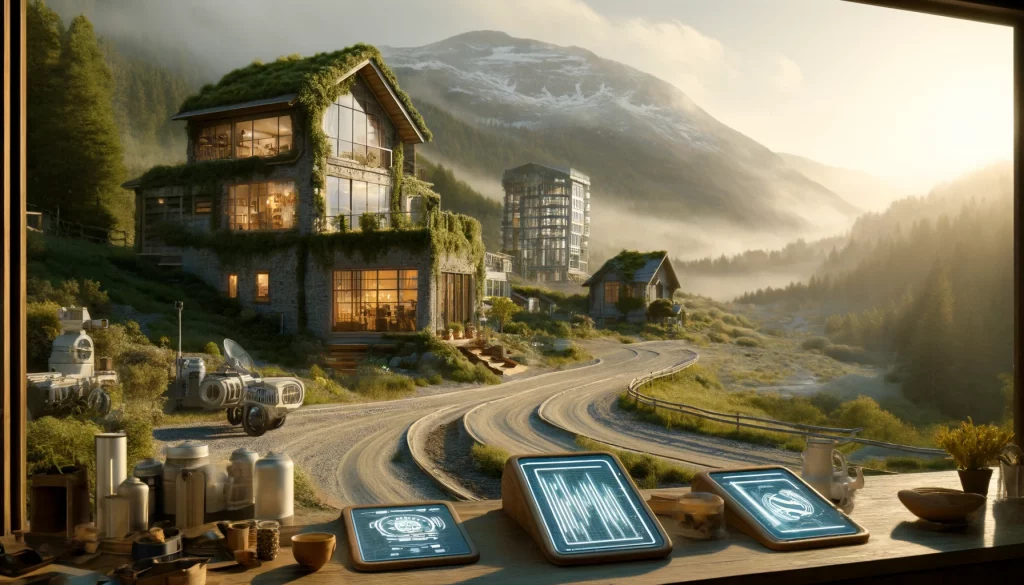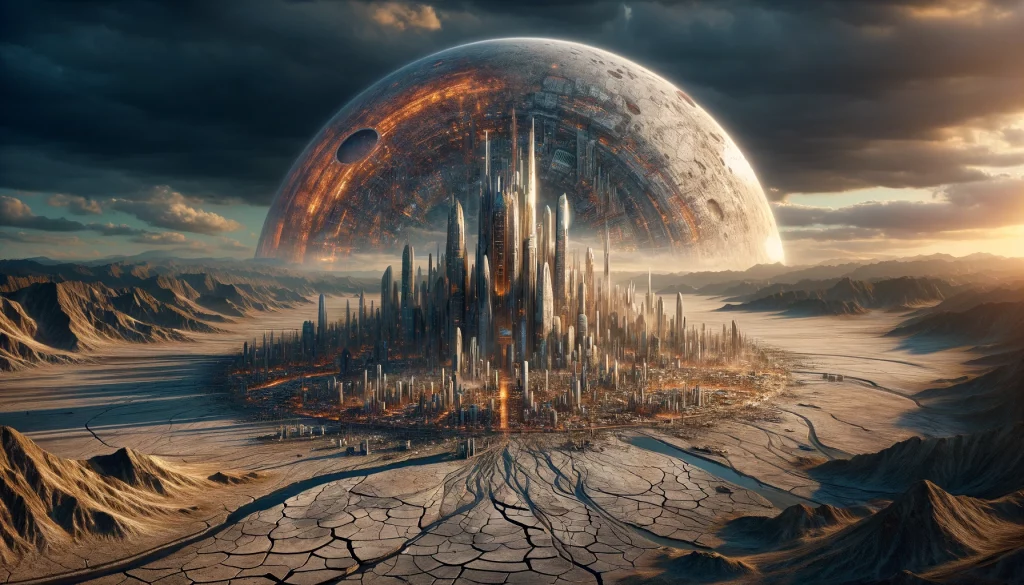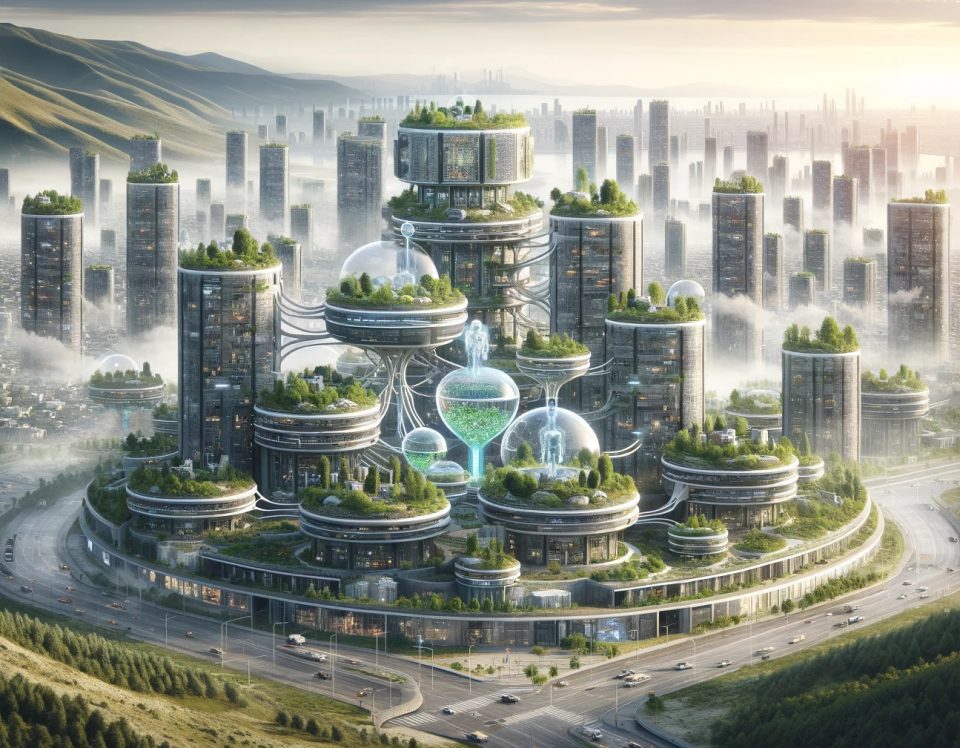Our ancient ancestors huddled around flickering flames, desperately fending off the cold with whatever they could burn. Fast-forward to the Victorian era, where sooty chimneys spewed black plumes as coal-fired furnaces roared, promising warmth but choking the air. The 20th century saw the rise of fossil fuel boilers, a seemingly cleaner solution that nonetheless contributed to a warming planet. Air conditioners blasted to escape summers that felt like Dante’s Inferno. The tale of home heating is less a cosy fireplace scene and more a cautionary story of human ingenuity battling unintended consequences. From fossil fuel follies to the rise of the eco-conscious heat pump, this is the story of how we kept warm (or cool) – and the fight to ensure a sustainable future where comfort doesn’t come at the expense of the planet.
The Year 2224: A Glimpse into a Thermally Transcendent Era
In 200 years, the concept of heating as we know it has become a quaint historical footnote. The early 21st century’s reliance on burning organic matter for warmth evokes the same bewildered fascination a child feels encountering a flint and steel fire starter. Radiators and water-based systems are museum artefacts, relics of a bygone era where comfort came at a steep price – environmental devastation. The scars left by fossil fuel consumption are a stark reminder of humanity’s past transgressions, a constant impetus for the ongoing ecological rehabilitation of the planet.

Heat pumps, once hailed as revolutionary, are now viewed as the rudimentary first steps in a long evolutionary leap. Nanotechnology and the manipulation of quantum energy fields have ushered in a new era of thermal mastery. Homes are constructed from bio-adaptive materials, a fusion of organic and synthetic elements, capable of responding to their environment in real-time. These smart skins convert sunlight directly into warmth on chilly days, seamlessly shedding excess heat during warmer periods. Self-repairing mechanisms ensure continued efficiency, rendering the notion of a malfunctioning heating system obsolete.
The pursuit of sustainable thermal regulation is no longer a standalone concern; it’s woven into the very fabric of a society dedicated to environmental atonement. Mitigating the lasting effects of fossil fuel dependence is just one facet of a multifaceted effort. Healing ecosystems and reversing the tide of climate change are ongoing battles fought on a global scale. The transition from archaic heating methods to these sophisticated systems exemplifies a broader shift towards a symbiotic relationship with the planet, where human comfort and environmental well-being are no longer seen as conflicting goals.
The Year 2524: Beyond Heating
Towering megacities, once gleaming testaments to human ambition, now huddle beneath vast, scorched domes – a desperate attempt to shield a population of 30 billion from the relentless sun. Centuries of environmental neglect have reshaped the Earth. What were once fertile plains are now cracked wastelands, ravaged by heat waves that ripple across continents like malevolent wildfires. The scars are a constant reminder of humanity’s past recklessness, a stark contrast to the bio-integrated architecture that now dominates the cityscape.

These buildings are living organisms, their synthetic bio-membranes pulsing with an internal life. Embedded bioluminescent organisms provide a soft, otherworldly glow, a silent apology for the lost night sky now permanently obscured by the perpetual dust haze churned by relentless sandstorms – another consequence of the desertification that swallowed vast swathes of arable land to feed the ever-expanding population.
Bio-integrated architecture isn’t just about aesthetics; it’s a matter of survival. These “breathing walls” filter the air, choked with the dust of a dying planet. Advanced neural interfaces, seamlessly integrated with the human nervous system, read discomfort directly from brainwaves. Buildings adjust their bio-membranes accordingly, channeling geothermal heat during the frigid ice waves that grip the planet with increasing frequency, or radiating excess heat during scorching summers that seem to stretch on endlessly.
This personalised comfort eliminates energy waste, a precious commodity in a world with a fractured resource grid. Vast, omnipresent neural networks monitor and manage energy distribution across the megacities, constantly optimising consumption and anticipating peak demands. These same networks are intricately woven into the weather conductor satellites, those marvels of orbital engineering that strive to maintain a semblance of normalcy.
The satellites manipulate electromagnetic fields and deploy bio-engineered drones to control weather patterns. However, the system is under constant strain. The Earth’s volatile climate throws curveballs – sudden, unpredictable shifts in temperature that test the limits of the technology. Algorithms struggle to adapt, their predictive models stretched thin by the ever-increasing volatility of the planet.
The human-microbe partnership forged through genetic engineering offers another line of defense against the extremes. These internal companions, specially engineered thermophilic microbes, generate warmth through a natural metabolic process, allowing humans to adapt to a wider range of temperatures. This biological adaptation is a crucial survival tool, but ethical considerations linger. Is this a symbiotic relationship, or a form of dependence bordering on parasitism?
Dreams of terraforming other planets haven’t been entirely abandoned. Wormhole technology allows for a limited exchange of thermal energy with distant star systems, creating self-sustaining biospheres within previously uninhabitable celestial bodies. However, these ventures are fraught with risk, a constant reminder of the consequences of past hubris. The scars on Earth serve as a stark warning – evidence of the fragility of ecosystems and the potential for unintended consequences when meddling with the delicate balance of a planet.
The challenges are immense. Ensuring equitable access to bio-integrated housing and maintaining the delicate balance of these living structures are constant struggles. The strain on resources due to the sheer number of humans is immense, a pressure point that threatens to crack the fragile systems holding civilisation together. Yet, amidst the scars, life persists. Humanity, forever changed by its past, is learning to live in a precarious harmony with a wounded planet. The thermostat is a relic of a bygone era, replaced by a future built on a deep respect for the environment and a profound understanding of the consequences of unchecked ambition. The path forward is a tightrope walk, one where human ingenuity and a powerful AI are but tools in the ongoing quest for survival.


World over population, is the main cause of Greenhouse gases
I wonder what the average life expectancy might be by the year 2524 Mars? I suspect that if present policy making is anything to go by, it might SEEM LIKE 500 YEARS!